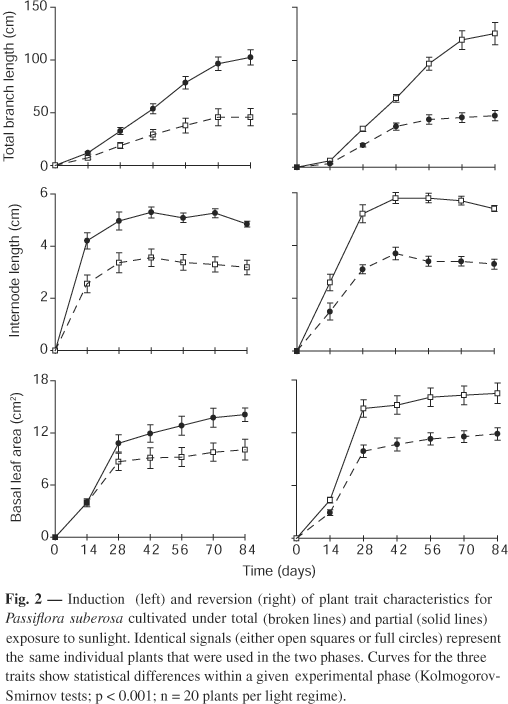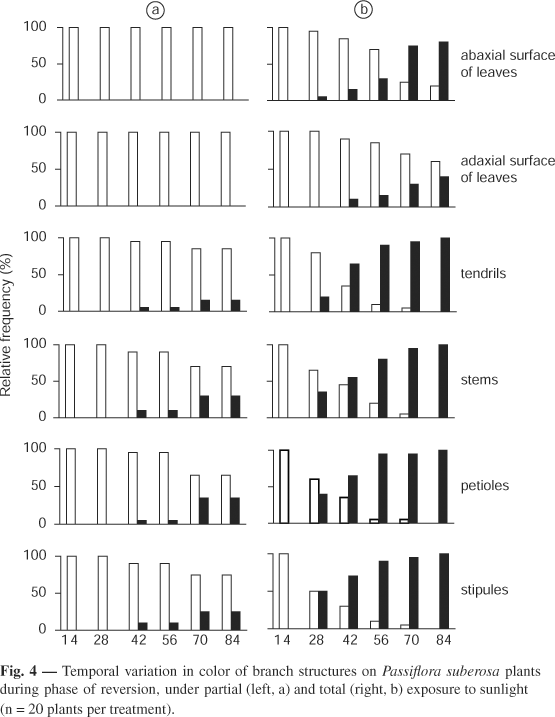Leaf morphology may vary considerably even within a branch of Passiflora suberosa plants. Leaves are of a typical green type in shaded areas, but in open fields turn into violet, and apparently have greater thickness and trichome density. The proximate causes and the adaptive meaning, if any, for the existence of the violet morph are still unknown. By cultivating P. suberosa clones under two light regimes (total and partial exposure to sunlight), we consecutively induced (first year) and then reversed (second year) the appearance of the violet morph. We evaluated the corresponding changes in morpho-anatomic and chemical leaf characteristics. Plants that were grown under partial sunlight had a greater size and did not alter their green color, but those grown under total sunlight changed into violet, were smaller in size and their leaves were tougher, thicker, and had a greater number of trichomes. The violet morph had increased anthocyanins and phenolic derivatives. It also showed cellular hypertrophy, a greater number of cell layers in the mesophyll, and a lignified pericycle. Since these morphs are interchangeable by changing light conditions, we inferred that they are not determined by genotypic diversity, but are mainly a result of a physiological response to light stress, and thus part of P. suberosa phenotypic plasticity.
anthocyanins; leaf morphology; light stress; passion vines; phenolic derivatives








